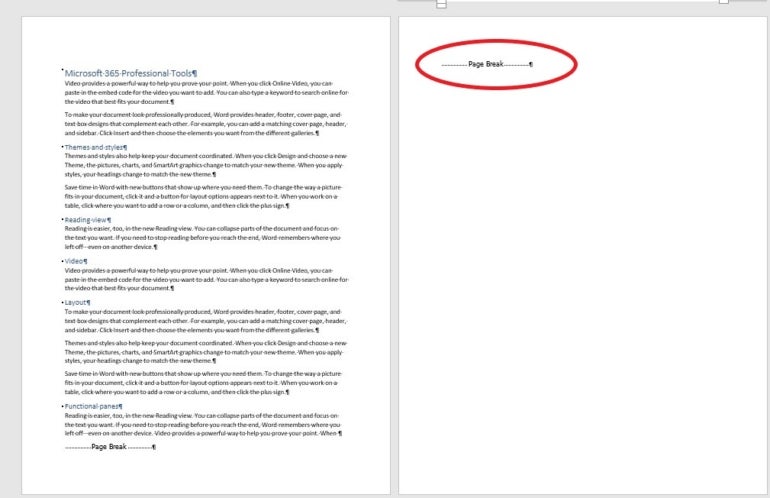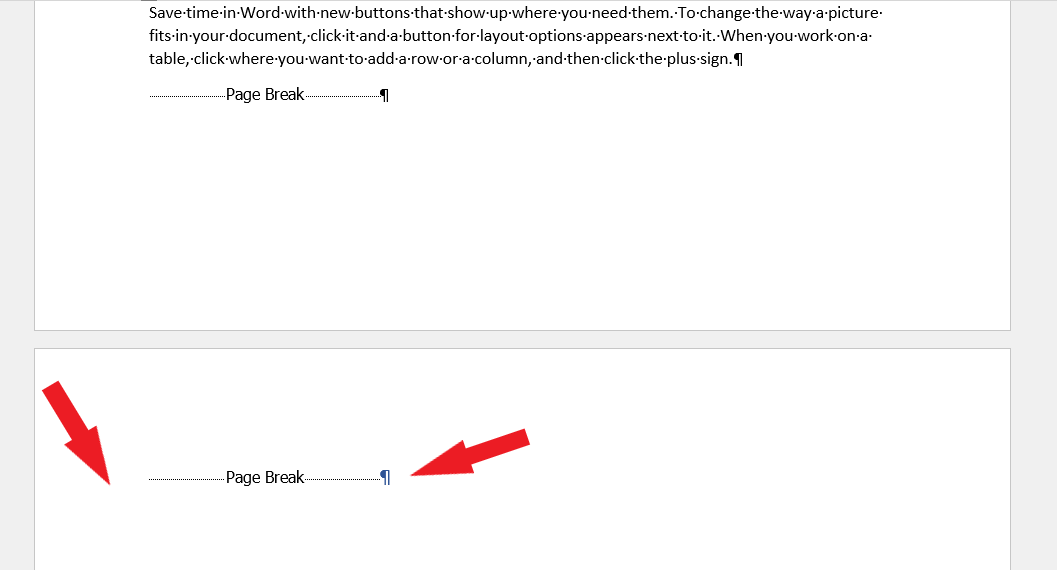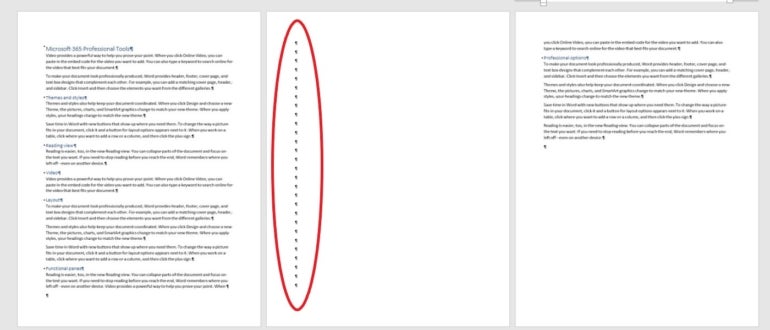| Duration | Tools needed | Tutorial Difficulty |
|---|---|---|
| A few seconds, clicks or keystrokes per method. | A Microsoft or Microsoft 365 account | Easy for both beginners and experts. |
In Microsoft Word documents, unwanted pages (usually blank pages) are a common mishap that usually occurs when someone presses Ctrl + Enter or Command + Return to force a new page (I recommend that you don't use that method). Most Word documents have some page breaks, so it's easy to end up with an unwanted blank page.
Considering how easy it is to end up with a blank page, you'd expect Word to provide an easy way to delete a page, regardless of how it's inserted; however, there is no quick-click option that will do this. In this tutorial, I'll show you five ways to delete an unwanted page in a Word document. It's unlikely that one of these first two methods won't be available, but just in case, I'm providing three additional methods for deleting a page in a Word document.
I'm using Microsoft 365 on Windows 11, but you can use an older version of both Word and Windows. Additionally, these methods work for Word on Mac; I don't recommend using Word for the web because it doesn't display the page break symbol.
DOWNLOAD: Discounted Windows 11 Pro from TechRepublic Academy
Before you begin: How to find page breaks in Word
Word supports two types of page breaks: a hard page break, entered by pressing Ctrl + Enter or Command + Return, and a soft page break, entered by Word to wrap text in the right margin. The only way to remove the latter is to remove the characters before or after it. This discussion is about how to delete unwanted blank pages created by pressing Ctrl + Enter to manually add a new page.
When working with page breaks, try enabling Word's Show/Hide feature in the Paragraph group on the Home tab, or press Command + 8 on a Mac. In Word for the web, you may need to show the classic ribbon to see this option, but it won't be enough because, as I mentioned, you won't see the page break symbol. Once you can see the symbols on the printed page in the desktop version, this option displays both page breaks and section breaks, making them easy to locate and delete.
SEE: Do you want to hide text in a Word document?
The following figure shows a three-page document with two page breaks. Once you find page breaks, they'll be easy to eliminate when you're working with just a few.
1. How to select and delete any page in Word
If you can see the page break in Word, you can quickly remove it. After enabling Show/Hide, select it and press Delete; This works regardless of where the page is located. As you can see in the figure below, there are two page breaks: one at the bottom of page one and a second at the top of page two. In this case, you would select the one at the top of page 2 by clicking twice in the left margin next to the page break. Then press Delete.

It's a good idea to check for page breaks this close to the bottom of a page in Word when you don't want to force a new page, so I recommend enabling Show/Hide when clearing page breaks.
This is the fastest and safest way to remove a hard page return in Word and I recommend using it if possible; When using other methods, you will often accidentally delete styles.
2. How to use the navigation pane to delete pages in Word
Another easy way to delete a single page in Word, regardless of whether it is empty, is to use Word's navigation pane. It only requires a few clicks:
- Click the View tab, and then click the navigation pane in the Show group.
- In the navigation pane, click Pages. (Word for the web does not support the Pages option.)
- Click on the blank page and press Delete. You'll know the page is selected by the thick blue border.

If the blank page has some paragraph marks before the page break in Word, you will need to press Delete accordingly, once per paragraph mark.
3. How to delete a page in the middle of a Word document
You can place the cursor at the beginning of the page in Word that follows the page you want to delete and press Backspace. You may have to click Backspace more than once.
In other words, if you want to delete page 2 of your document, go to the top of page 3 and press Backspace; This works because the last character of page 2 is a page break. In this example, you may want to also remove the page break at the end of page 1.

Unfortunately, there is no shortcut to move the cursor to the top of the current page, so you have to position the cursor manually; however, the shortcut Ctrl + Page Up might help. If the cursor is somewhere on page 3, press Ctrl + Page Up to place the cursor at the top of page 2 and delete the physical page. Admittedly, this method is a bit complicated, but it is useful when you are already on the page after the one you want to delete.
4. How to delete an extra page at the end of a Word document
Sometimes a Word document has a blank page at the end that you don't want to keep. If the blank page is the result of a page break, clicking Backspace once should be enough; You don't even need to enable Show/Hide. If the page is the result of multiple paragraph marks, you will need to click Backspace several times, once for each paragraph mark.
5. What to do when there is a hard-to-remove page break in Word
It is possible to force a new page using paragraph marks. The following figure shows a blank page created using printed returns, also known as paragraph marks. Paragraph marks are a visual representation of pressing the Enter key.

To delete this page full of paragraph marks, select all the marks and press Delete.
SEE: How to remove multiple page breaks in a Word document
Frequently asked questions about how to delete a page in a Word document
The five methods to delete a blank page in Word will fix most situations, although occasionally you may need more help.
Why can't I delete a page in Word?
If the Word document is not protected, you should be able to delete blank pages using one of the methods detailed above. If you come across a Word page that won't delete, chances are the document or section is protected; When this happens, you will need to contact the author of the document for further assistance. You will most likely need a password which, once entered, will allow you to modify the document or section.
How can I delete a page in Word without affecting other pages?
You can't delete a page in Word without having some impact on subsequent pages. For example, deleting a page in a Word document will change the page numbering and field codes that depend on the page number; If you reference these numbers in the text, you will need to update the references accordingly.
Deleting an empty page in a Word document probably won't disrupt the flow too much. After removing page breaks, Word can repaginate the following pages. There is no way to avoid this, so it is best to be aware of it so you can modify the results if necessary.
How can I delete a blank page in Word for the web?
When deleting a blank page in Word for the web, you can still use Show/Hide, although it will only show paragraph marks. Place the cursor on the appropriate paragraph mark and press Backspace. If you're having trouble, use the desktop version of Word.












